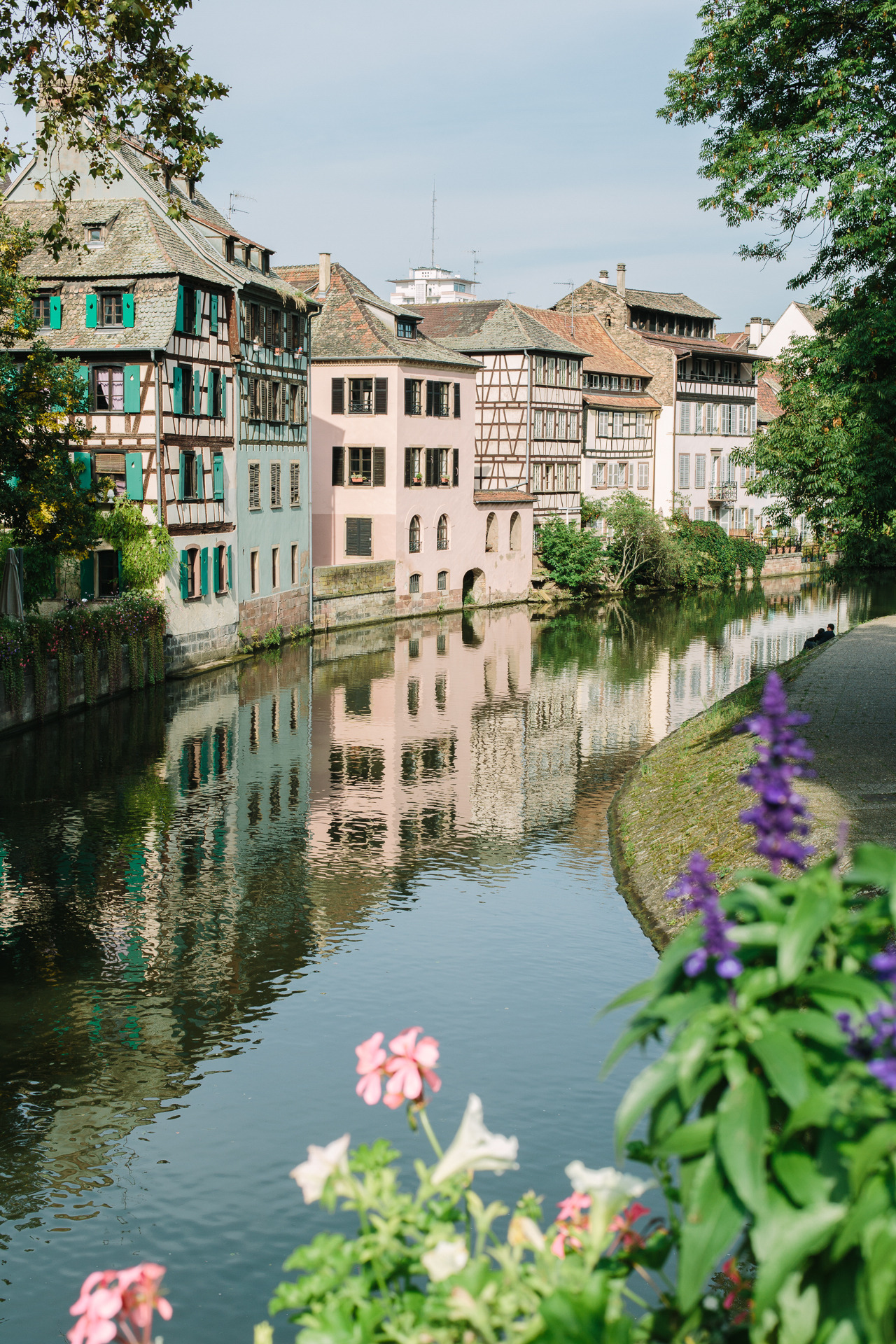Alsace; Alsatian: ’s Elsass; German: Elsass, pre-1996: Elsaß;is the fifth-smallest of the 27 regions of France in land area, and the smallest in metropolitan France. It is also the seventh-most densely populated region in France and third most densely populated region in metropolitan France, with ca. 220 inhabitants per km².Alsace is located on France's eastern border and on the west bank of the upper Rhine adjacent to Germany and Switzerland. Historical decisions, wars, and strategic politics have resulted in Alsace being administered separately as its own "region" within the Republic of France. The political, economic and cultural capital as well as largest city of Alsace is Strasbourg. Because that city is the seat of dozens of international organizations and bodies, Alsace is politically one of the most important regions in the European Union.The name "Alsace" can be traced to the Old High German Ali-saz or Elisaz, meaning "foreign domain".An alternative explanation is from a Germanic Ell-sass, meaning "seated on the Ill",a river in Alsace. The region, as part of Lorraine, was part of the Holy Roman Empire, and then was gradually annexed by France in the 17th century, and formalized as one of the provinces of France. The Calvinist manufacturing republic of Mulhouse, known as Stadtrepublik Mülhausen, become a part of Alsace after a vote by its citizens on 4 January 1798. Alsace is frequently mentioned with and as part of Lorraine and the former duchy of Lorraine, since it was a vital part of the duchy, and later because German possession as the imperial province four times in 75 years.The historical language of Alsace is Alsatian, a Germanic dialect spoken in Lorraine and across the Rhine, but today all Alsatians speak French, the official language of France. 43% of the adult population, and 3% of children, stated in 2012 that they speak Alsatian.The place names used in this article are in French. See this list for the German place names.In prehistoric times, Alsace was inhabited by nomadic hunters, but by 1500 BC,Celts began to settle in Alsace, clearing and cultivating the land. By 58 BC, the Romans had invaded and established Alsace as a center of viticulture. To protect this highly valued industry, the Romans built fortifications and military camps that evolved into various communities which have been inhabited continuously to the present day. While part of the Roman Empire, Alsace was part of Germania Superior.With the decline of the Roman Empire, Alsace became the territory of the Germanic Alemanni. The Alemanni were agricultural people, and their language formed the basis of modern-day dialects spoken along the Upper Rhine. Clovis and the Franks defeated the Alemanni during the 5th century, culminating with the Battle of Tolbiac, and Alsace became part of the Kingdom of Austrasia. Under Clovis' Merovingian successors the inhabitants were Christianized. Alsace remained under Frankish control until the Frankish realm, following the Oaths of Strasbourg of 842, was formally dissolved in 843 at the Treaty of Verdun; the grandsons of Charlemagne divided the realm into three parts. Alsace formed part of the Middle Francia, which was ruled by the youngest grandson Lothar I. Lothar died early in 855 and his realm was divided into three parts. The part known as Lotharingia, or Lorraine, was given to Lothar's son. The rest was shared between Lothar's brothers Charles the Bald and Louis the German (ruler of the East Frankish realm). The Kingdom of Lotharingia was short-lived, however, becoming the stem duchy of Lorraine in Eastern Francia after the Treaty of Ribemont in 880. Alsace was united with the other Alemanni east of the Rhine into the stem duchy of Swabia.At about this time the surrounding areas experienced recurring fragmentation and reincorporations among a number of feudal secular and ecclesiastical lordships, a common process in the Holy Roman Empire. Alsace experienced great prosperity during the 12th and 13th centuries under Hohenstaufen emperors. Frederick I set up Alsace as a province to be ruled by ministeriales, a non-noble class of civil servants. The idea was that such men would be more tractable and less likely to alienate the fief from the crown out of their own greed. The province had a single provincial court and a central administration with its seat at Hagenau. Frederick II designated the Bishop of Strasbourg to administer Alsace, but the authority of the bishop was challenged by Count Rudolph of Habsburg, who received his rights from Frederick II's son Conrad IV. Strasbourg began to grow to become the most populous and commercially important town in the region. In 1262, after a long struggle with the ruling bishops, its citizens gained the status of free imperial city. A stop on the Paris-Vienna-Orient trade route, as well as a port on the Rhine route linking southern Germany and Switzerland to the Netherlands, England and Scandinavia, it became the political and economic center of the region. Cities such as Colmar and Hagenau also began to grow in economic importance and gained a kind of autonomy within the "Decapole" or "Dekapolis", a federation of ten free towns.
Source:
Picture:Link:
Wikipedia:Link:

0 comments:
Post a Comment